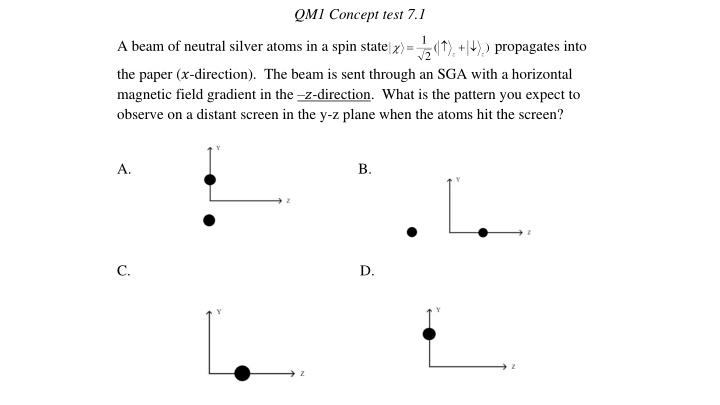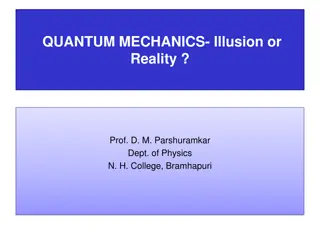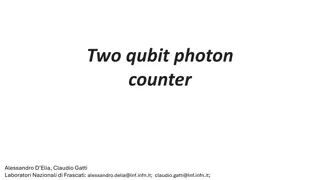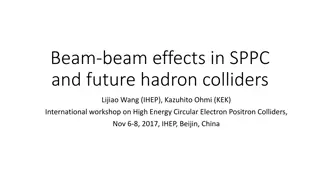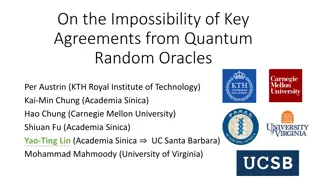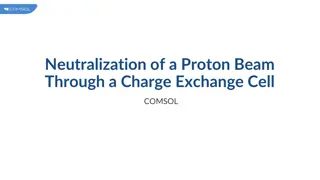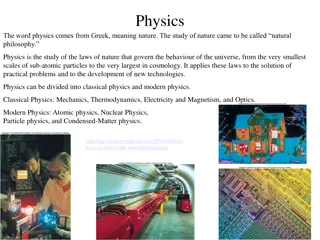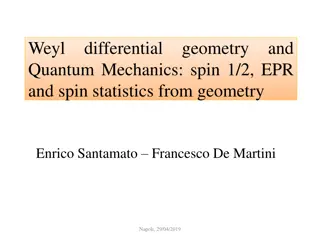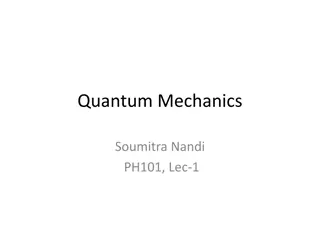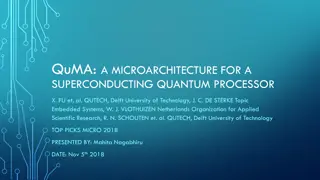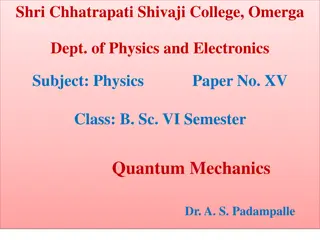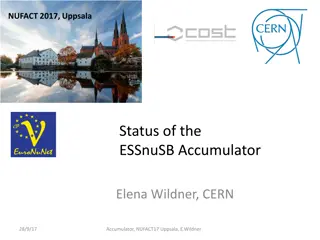Quantum Mechanics Concepts: Beam of Neutral Silver Atoms
Explore the behavior of a beam of neutral silver atoms in spin states through various scenarios involving magnetic fields and detectors. Understand the quantum phenomena observed on distant screens and detectors when the atoms interact with magnetic gradients. Delve into the probabilities and preparation of silver atoms in specific spin states using Spin-Gradient Assemblies (SGAs).
Download Presentation

Please find below an Image/Link to download the presentation.
The content on the website is provided AS IS for your information and personal use only. It may not be sold, licensed, or shared on other websites without obtaining consent from the author.If you encounter any issues during the download, it is possible that the publisher has removed the file from their server.
You are allowed to download the files provided on this website for personal or commercial use, subject to the condition that they are used lawfully. All files are the property of their respective owners.
The content on the website is provided AS IS for your information and personal use only. It may not be sold, licensed, or shared on other websites without obtaining consent from the author.
E N D
Presentation Transcript
QM1 Concept test 7.1 1 A beam of neutral silver atoms in a spin state propagates into = + ( ) 2 z z the paper (?-direction). The beam is sent through an SGA with a horizontal magnetic field gradient in the ?-direction. What is the pattern you expect to observe on a distant screen in the y-z plane when the atoms hit the screen? A. B. C. D.
QM1 Concept Test 7.2 1 = + ( ) A beam of neutral silver atoms in a spin state propagates z z 2 into the paper (?-direction). The beam is sent through an SGA with a horizontal magnetic field gradient in the ?-direction. What is the pattern you expect to observe on a distant screen in the y-z plane when the atoms hit the screen? A. B. C. D.
QM1 Concept test 7.3 A beam of neutral silver atoms in a spin state an SGX-. An up detector blocks some silver atoms, as shown in the picture below. What are the most appropriate basis vectors to find the fraction of the atoms exiting in the down output spin state? is sent through = ) 0 = + ( t a b z z + a b z z SGX- A. and x x B. and z z C. either { , } or { , } x x z z D. , , and z z x E. None of the above
QM1 Concept Test 7.4 A beam of neutral silver atoms in a spin state an SGX-. An up detector blocks some silver atoms, as shown in the picture below. What fraction of the initial silver atoms will be blocked by the detector? is sent through = ) 0 = + ( t a b z z A. ? 2 SGX- B. ? 2 C. ?+? 2 2 D. ? ? 2 2 E. None of the above
Concept Test 7.5 The initial state of a beam of neutral silver atoms is state ?. Which of the following shows an appropriate SGA to collect neutral silver atoms in spin state ?. Suppose you want to prepare a beam of neutral silver atoms in spin ?? SGZ- ? SGZ- ? SGX- A B ? SGX- ? SGZ- SGX- SGX+ C D
QM1 Concept Test 7.6 . It propagates A beam of neutral silver atoms is in an initial spin state through two SGAs as shown below. What is the probability that detector B will click for the atoms enter the first SGA? z A. B. C. 1/8 D. 1 E. none of the above
Concept Test 7.7 The initial state of a beam of neutral silver atoms is probability that the detector will click for the atoms that enter the first SGA? ?. It propagates through three SGAs as shown below. What is the ? SGZ- SGX- SGX+ A. B. C. 1/8 D. 1 E. None of the above
QM1 Concept Test 7.8 Suppose neutral silver atoms are in an unknown state. The spin state of each atom is either a mixture with 70% of the atoms in the state and 30% of the atoms in the z z 7 3 state or it is a superposition state . Choose all of the following + 10 10 z z statements that are correct about the beam propagating through an SGZ or SGX apparatus. (I) When the beam propagates through the SGZ, 70% of the atoms will register in one detector and 30% of the atoms will register in the other detector, regardless of the two possibilities for the state. (II) When the beam propagates through the SGX, 50% of the atoms will register in one detector and 50% of the atoms will register in the other detector, regardless of the two possibilities for the state. (III) We can use an SGZ to distinguish between the two possible spin states of the incoming silver atoms. A. (I) only B. (II) only C. (III) only D. (II) and (III) only E. none of the above
